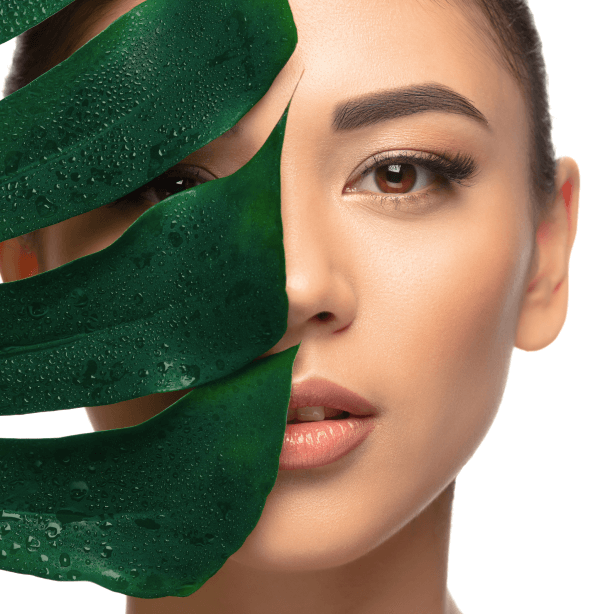Are you considering a subtle enhancement to your natural beauty, or perhaps aiming to reverse the signs of aging? Dermal fillers have emerged as a popular choice for individuals seeking quick, non-surgical methods to rejuvenate their look. But what exactly are dermal fillers, and what should you expect from the process? In this comprehensive guide, we’ll walk you through everything from the various types of fillers to the recovery process, ensuring you have all the insights you need to make informed decisions about this cosmetic treatment.
What are Dermal Fillers?
Dermal fillers, also known as injectable facial implants, soft tissue fillers, or wrinkle fillers, are medical devices regulated by the Food and Drug Administration (FDA) and are designed to restore facial contours and improve signs of aging. The injection of dermal fillers under the skin is a popular minimally invasive option to restore volume and fullness in the face, plump thin lips, soften facial creases and wrinkles, enhance shallow contours, and improve the appearance of recessed scars.
Why are Dermal Fillers Used?
Many individuals opt for dermal filler treatments to address concerns such as:
- Facial Volume Loss: Over time, the face loses fat, collagen, and elastin, which leads to sagging skin and diminished facial volume. Dermal fillers can help restore volume in areas such as the cheeks, undereye areas, and temples.
- Lip Enhancement: Some individuals desire fuller lips and use dermal fillers to add volume and shape.
- Wrinkle Reduction: Dermal fillers can be used to fill in and reduce the appearance of deep lines and wrinkles, particularly around the mouth, nose, and forehead.
- Scar Treatment: They can improve the appearance of certain types of scars by filling in areas where the skin’s natural support structure has diminished.
How Common are Dermal Fillers?
The use of dermal fillers has been steadily increasing, with millions of procedures performed each year worldwide. This is largely due to the ease of the procedure and the immediate effects that patients experience, making it an alluring option for many.
What are the Types of Dermal Fillers?
There are several types of dermal fillers, categorized by the substances they are made from. The most common types include:
- Temporary fillers: These are injected under the skin and are eventually absorbed by the body. The effects typically last from several months to over a year, depending on the filler.
- Semi-permanent fillers: These fillers are thicker and can last for a longer time, as they are slowly broken down by the body over time.
- Permanent fillers: These fillers are non-absorbable, and are designed to be a long-lasting solution to facial aging. They carry an increased risk of side effects and are not as popular as temporary fillers.
- Hyaluronic Acid (HA) fillers: HA is a naturally occurring substance in the body, and these fillers are known for their ability to retain moisture.
- Calcium Hydroxylapatite (CaHA) fillers: These fillers are made from a mineral-like compound found in human bones and are thicker than HA fillers.
- Poly-L-lactic acid (PLLA) fillers: This biodegradable, biocompatible synthetic substance has been used by doctors for years in resorbable stitches and plates.
- Polymethylmethacrylate (PMMA) fillers: This non-biodegradable, opaque substance is used in various medical fields, including orthopedic and dental devices.
Procedure Details
When considering a dermal filler treatment, it is important to be aware of what happens before, during, and after the procedure.
What Happens Before a Dermal Filler Procedure?
Before your dermal filler procedure, you will consult with a doctor or specialist to discuss your goals, your medical history, and any allergies or medical conditions. It’s essential to be open about your medical background to reduce the risks of complications. Your provider will also give you pre-procedure instructions, which might include avoiding certain medications that can increase bruising.
What Happens During a Dermal Filler Procedure?
During the procedure, your provider will clean the area to be treated and may apply a topical anesthetic cream to numb the area. The filler is then injected strategically beneath the skin using a fine needle or a cannula to minimize the risk of trauma and bruising. You might feel a slight discomfort, but it’s generally well tolerated.
What Happens After a Dermal Filler Procedure?
After the injection, your provider will massage the treated area to ensure the filler is distributed evenly. You might experience some redness, swelling, and bruising, but this typically subsides within a week. It’s important to follow the post-procedure care instructions carefully, which may include avoiding strenuous activities and certain medications.
Risks / Benefits
Like any medical procedure, dermal fillers carry both advantages and risks.
What are the Advantages of Dermal Filler Procedures?
The benefits of dermal fillers include:
- Quick and noticeable results: You will see an immediate improvement in the treated areas.
- Minimally invasive: Dermal fillers don’t require surgery, which means less downtime and fewer risks than more invasive treatments.
- Long-lasting effects: Depending on the type of filler used, the results can last from several months to over a year.
What are the Risks or Complications of Dermal Fillers?
Risks associated with dermal fillers include:
- Bruising and swelling: This is common and usually resolves within a week.
- Infection at the injection site: Although rare.
- Allergic reaction: Particularly with fillers that contain a substance to which a patient is allergic.
- Necrosis: If the dermal filler is injected into a blood vessel, it can restrict blood flow and lead to tissue death.
- Unsatisfactory results: There’s a chance the results may not meet your expectations, although this can often be addressed with adjustments or additional treatment.
Recovery and Outlook
After your dermal filler procedure, the recovery process is typically minimal. You should be able to resume most of your daily activities immediately, but your provider may recommend avoiding strenuous exercise for the first 24-48 hours. The treated area may be slightly swollen or bruised, but these effects should subside within a few days to a week. You should see the full results of the procedure once the swelling has gone down, which may take up to two weeks.
When to Call the Doctor
If you experience any unusual symptoms, severe pain, or signs of infection after your dermal filler treatment, it’s important to contact your healthcare provider immediately.
When Should I See My Healthcare Provider About Dermal Fillers?
You should seek medical attention if you experience:
- Sudden or severe pain: This could indicate a problem such as infection or inadequate blood flow to the area.
- Swelling or bruising that lasts longer than expected: While some degree of swelling and bruising is normal, if it persists or increases, it could be a sign of an underlying issue.
- Itchiness or a rash: These could be signs of an allergic reaction.
- Changes in skin color or texture: This could indicate a problem with the filler placement, including necrosis.
By being informed about the process and potential outcomes of dermal fillers, you can approach the procedure with confidence and understanding. Remember, the best results come from a partnership between the patient and their healthcare provider, so don’t hesitate to ask questions and share your concerns throughout the process.


